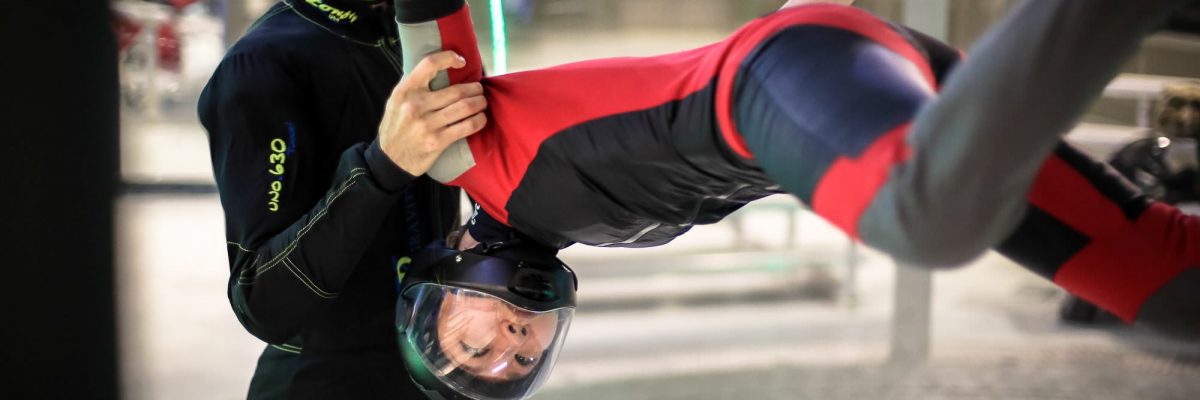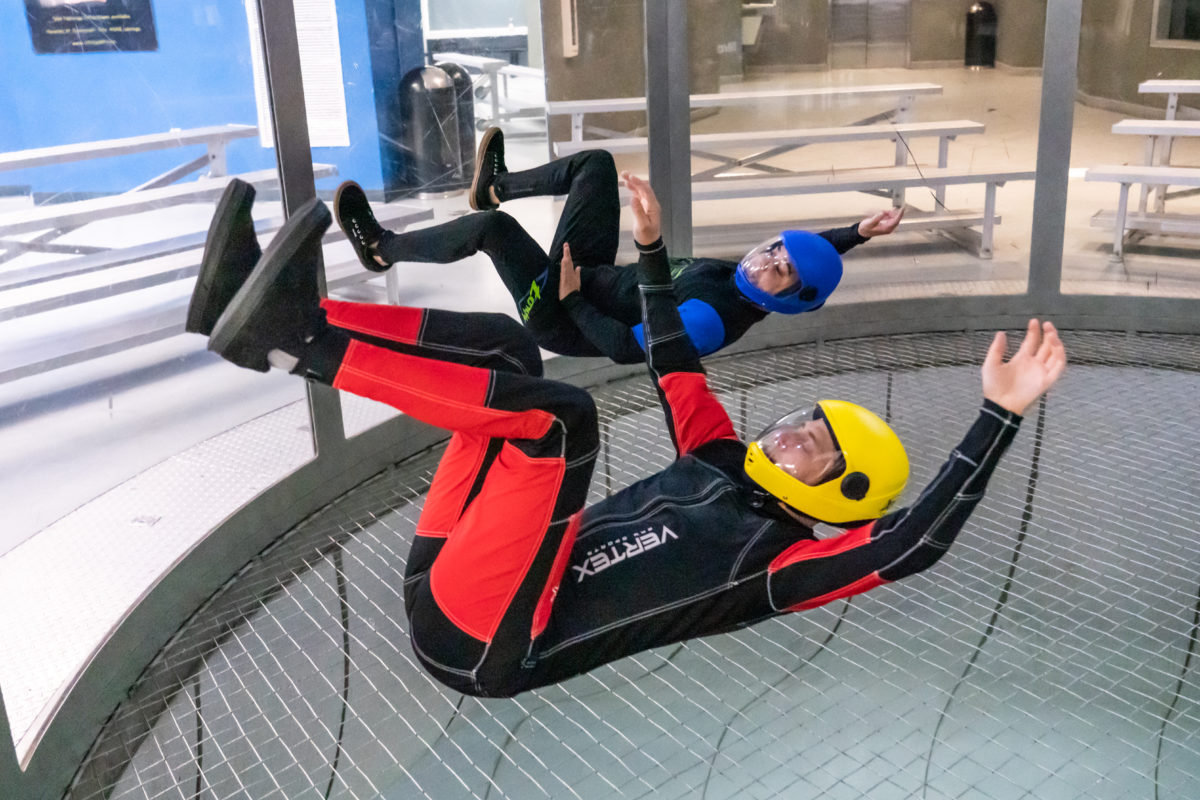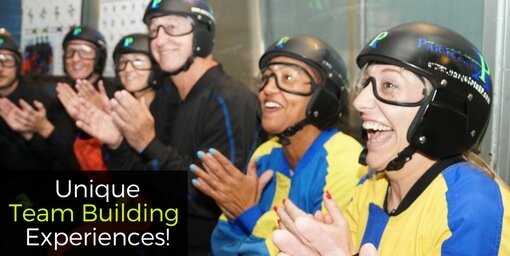
Everything To Know About Indoor Skydiving Safety Tips
Monday, May 25, 2020
- Team XP
- 5/25/20
- 0
- Indoor Skydiving
People often wonder about what risks are involved when it comes to indoor skydiving. Although indoor skydiving appears both exciting and risky, the level of safety is very high and injuries of any kind are incredibly rare. Here are some factors that contribute to the overall safety level of this incredible sport.
Technology
The steady march of technology has contributed to indoor skydiving’s safety in recent years, and the days of indoor skydiving powered by an unturned aircraft engine with a single giant terrifying propeller underneath are gone.
These days, indoor skydiving facilities and wind tunnels are closer to spaceships. The advancements in designs and materials used to construct them add up to better wind tunnel safety and a confidence-inspiring flight experience. Elements like smoother, more consistent airflow and more rapid reactions to wind speed adjustment are important parts of keeping risk at an absolute minimum.
Gear
There are various items you need to go indoor skydiving comfortably and safely, whether you are indoor skydiving for the first time or are a seasoned professional. Some are very obvious, while others are more subtle but still add to the overall safety of the experience.
Helmets
Until recently, people have been subbing in protective headgear from other sports, with the good old water sports Pro-Tec a particular favorite for many years. About a decade ago, in conjunction with the evolution tunnel flying itself, skydiving helmets manufacturers began introducing design features specifically aimed at the indoor market’s needs. The most modern development includes the Cookie Composites G4, which have been built in tandem with the development of a new rating crafted especially for indoor and outdoor skydiving.
Suits
Suit design and construction quickly gets technical and complicated when it comes to their qualities for flying. From a safety perspective, a jumpsuit is clothing that doesn’t come off when you are flying around. Suits are built to be particularly strong in certain places, but have a certain level of robustness throughout.
Indoor skydiving is hard on materials, and they must be constructed to a certain standard or will fall apart quickly. A jumpsuit will join in the middle unlike most of your regular clothes, and have sturdy wind-proof zippers that don’t come open when you fly.
Shoes
Shoes need to be enclosed and tied tight. That is all. Tunnel instructors talk about shoes a lot because waking around on the net all day tears them up.
Gloves
These are a personal choice. Some people swear by them, others swear just as much by not having them. Although there is a bit of advanced training that involves hanging onto the net (when you are learning the head-down orientation), gloves are only a part of your flying kit if you want them to be.
Base Layers
Flyers like to wear base layer clothing under their jumpsuits for reasons that contribute to personal safety. A good quality compression layer helps your muscles stay warm to reduce both fatigue and the risk of strains and pulls. It’s a personal choice, but a popular one.
Pads
Padding up is another choice, and it all comes down to the way you are training to fly. If you are practicing correctly under the right guidance, then crashing should not happen. However, it might feel like you are close to crashing and having additional protection can make a difference.

Training
There are two systems in place that govern the training and progression of indoor skydiving instructors. The United States is governed predominantly by the International Bodyflight Association and Europe is regulated by Tunnel Instructor.
These organizations provide a standardized methodology for the skills of both industry workers and casual flyers alike. There are subtle differences between the two systems but for the most part, both work to provide a standardized system for the safety of indoor skydiving around the world.
Skills
All the items listed above are important parts of indoor skydiving’s overall safety, but one is more crucial than all the others — the skills of the instructor. Over time, tunnel instructors get very, very good at teaching people how to fly and looking after them in the flight chamber. It doesn’t matter how fancy they are at flying; rather, the instructor’s primary skillset is to keep people safe and that happens when their feet are firmly planted on the net.
Training is done in manageable, digestible pieces. A good instructor gives you enough for it to be a rewarding challenge but not overwhelming. Pushing people along at their best learning pace is key, and adjusting that pace at all times, in a process of action and reaction, is what great instructors are made of.
Conclusion
Indoor skydiving is both fun and rewarding. In modern facilities like Paraclete XP, you can get started very quickly and there is little risk involved with doing so. We are proud to say that we have some of the most experienced staff in the whole industry, who love to teach their passion. Come and give it a try!

I surprised my kids today with a flight. At first they were worried but after they went through the instruction and their 1st flight they had a great time. They smiled for hours after we left. Instructors were very knowledgeable and friendly. This was well worth the drive and cost involved. We will be back. Thank you for being a great place to take kids. Keep up the good work.
James Griffin
Copyright © 2025, Paraclete XP Indoor Skydiving, All Rights Reserved.
DropZone Web Design & Marketing by Beyond Marketing, LLC